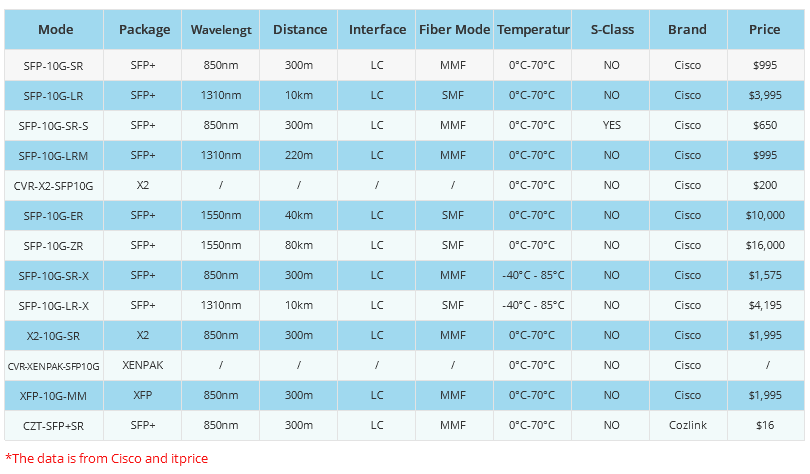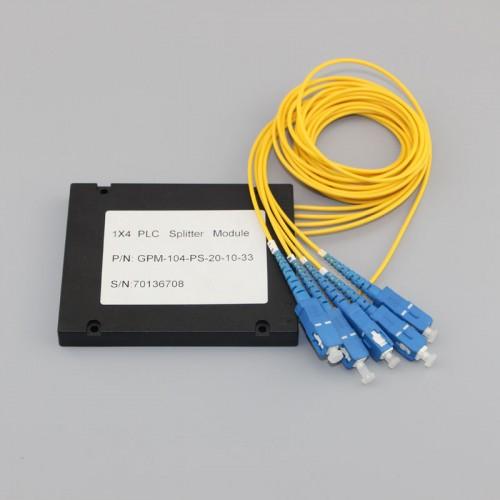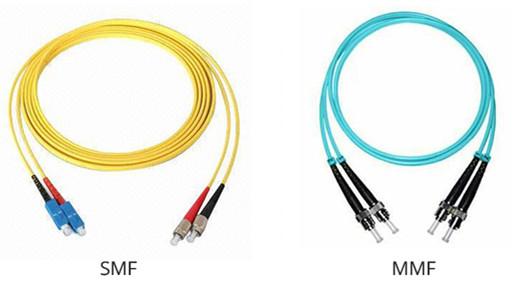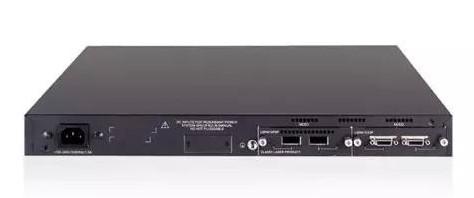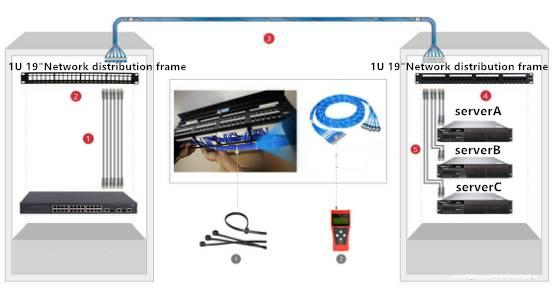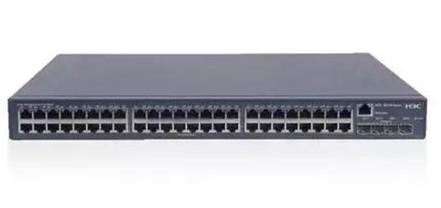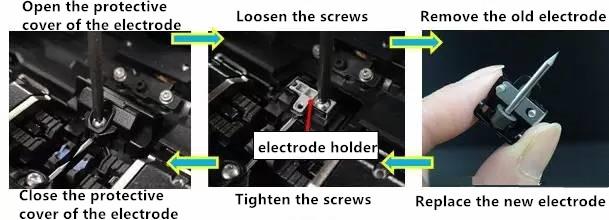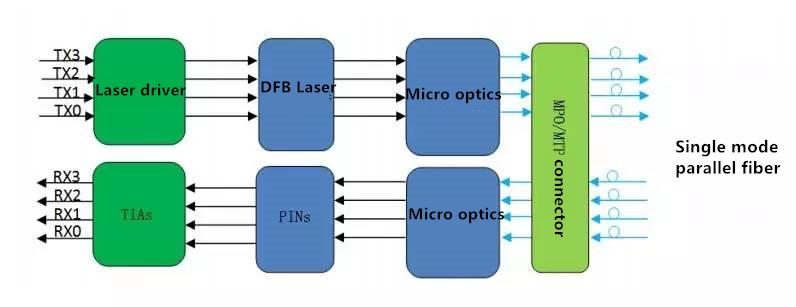- Related articles
- Optical Transceivers for Cisco WS-C3650-48PD-E Switch
- Optical Transceivers for Cisco SF200E-48-UK Switch
- All Cisco DWDM-SFP10G-60.61's information (List price, Specs, Datasheet PDF, Compatibility
- Optical Transceivers for Cisco WS-CBS3125G-S Switch
- Buy Cisco GLC-SX-MM SFP For Fiber Optic Networks
- Cost-effective & Scalable Solution To Cisco CWDM SFPs
- The difference between GBIC and SFP
- Optical Transceivers for Cisco WS-C3650-24TS-S-RF Switch
- What Is GYTZA Fiber Optic Cable?
- The History of Network Interface Card
Recommend tag
What are the common QSFP+optical modules?
2024-10-28
At present, under the call for 100G, 200G, and 400G high-speed optical modules, 40G QSFP+optical modules have been widely used in access links. 40G/100G Ethernet is an Ethernet standard developed by the IEEE 802.3ba Group, which supports 40/100Gb Ethernet frame transmission per second and establishes physical layer specifications for communication through backbone networks, copper cabling, multimode fiber optic cables, and single-mode fiber optic cables. 40G Ethernet has four times the capacity and can be economically migrated to 100G Ethernet.
Nowadays, 40G networks are very common in most data centers, and optical modules are one of the essential components for interconnecting data center equipment. So, how much do you know about 40G QSFP+optical modules? How many types are there? What are the differences between them? Friends who want to know the answer, please continue reading. Below, SEESUO will introduce you to the types and differences of 40G QSFP+optical modules.

The 40G SR4 QSFP+optical module is often used in conjunction with MPO/MTP connectors for 40G data transmission. Unlike 40G LR4 QSFP+optical modules, this type of optical module is often used for multimode fiber transmission and can support signal transmission of about 100 meters for OM3 jumpers and about 150 meters for OM4 jumpers. When transmitting signals at the sending end, the laser array first converts the electrical signal into an optical signal, which is then transmitted in parallel through a ribbon multimode fiber. When the receiving end receives the signal, the photodetector array converts the parallel optical signal into a parallel electrical signal.
In addition to supporting conventional SDR/DDR/QDR bandwidth connections, 10/40G Ethernet, and data center applications, the 40G PSM LR4 launched by SEESUO and others also meets the requirements of SONET OC-192 The application requirements for OTU1e, OTU2, OTU2e, and OTU3 rates have expanded or compensated for the application areas of 40G LR.
With the maturity of 40G optical modules and related series products, functional design is no longer the main selling point of the industry, and cost-effectiveness has taken its place, that is, the optimization of cost and performance reliability.
The 40G BASE-SR4 optical module adopts MTP/MPO interface, with a working wavelength of 850nm, and is generally used in multimode applications. When used together with OM3/OM4 multimode fiber, its transmission distance is 100m and 150m respectively, mainly used to connect network equipment in data centers. The 40G BASE-SR4 optical module can not only use MTP/MPO fiber jumpers to connect two 40G network devices, but also be used together with MTP/MPO to LC fiber jumpers to connect 40G network devices to 10G network devices.
The 40G BASE-SR4 optical module adopts MTP/MPO interface, with a working wavelength of 850nm, and is generally used in multimode applications. When used together with OM3/OM4 multimode fiber, its transmission distance is 100m and 150m respectively, mainly used to connect network equipment in data centers.
The 40G BASE-SR4 optical module can not only use MTP/MPO fiber jumpers to connect two 40G network devices, but also be used together with MTP/MPO to LC fiber jumpers to connect 40G network devices to 10G network devices.
2. Effectively reducing costs, more economical than other metropolitan area network solutions;
3. Simplified the network architecture and reduced the number of accessories. It is worth mentioning that in the application of urban backbone networks, its scheduling and integration are far superior to four 10G systems, which can save data center area, reduce equipment stacking, and improve the bandwidth management and scheduling capabilities of single node devices;
4. Usually, a single wavelength can handle multiple data connections, greatly enhancing the functionality of the core network and allowing for better business expansion.
Nowadays, 40G networks are very common in most data centers, and optical modules are one of the essential components for interconnecting data center equipment. So, how much do you know about 40G QSFP+optical modules? How many types are there? What are the differences between them? Friends who want to know the answer, please continue reading. Below, SEESUO will introduce you to the types and differences of 40G QSFP+optical modules.

What is QSFP+optical module?
QSFP+is a 40G optical module packaging form defined by the IEEE organization, which greatly meets the market's demand for high density and high speed. The 40GQSFP+optical module is a compact hot swappable optical module with four transmission channels, each with a data rate of 10Gbps. This optical module complies with various standards such as SCSI, 40G Ethernet, 20G/40G Infiniband, etc.What are the common QSFP+optical modules?
40G-SR4 QSFP+optical module:The 40G SR4 QSFP+optical module is often used in conjunction with MPO/MTP connectors for 40G data transmission. Unlike 40G LR4 QSFP+optical modules, this type of optical module is often used for multimode fiber transmission and can support signal transmission of about 100 meters for OM3 jumpers and about 150 meters for OM4 jumpers. When transmitting signals at the sending end, the laser array first converts the electrical signal into an optical signal, which is then transmitted in parallel through a ribbon multimode fiber. When the receiving end receives the signal, the photodetector array converts the parallel optical signal into a parallel electrical signal.
40G-LR4 QSFP+optical transceiver module:
The 40G LR4 QSFP+optical module is generally used with LC single-mode fiber jumpers, with a maximum transmission distance of up to 10km, and it has 4 data channels that transmit data simultaneously. Working principle: The laser driver controls the wavelength of arrival, and the optical signal is then combined together through a multiplexer for transmission. When approaching the receiving end, these transmitted signals are further decomposed into four channels with a transmission rate of 10Gbps by a demultiplexer, and then the PIN detector or transimpedance amplifier recovers the data stream before transmitting the optical signal.40G-LR4 PSM4 QSFP+optical transceiver module:
The optical port of the 40G-LR4 PSM4 QSFP+optical transceiver module adopts Single Mode technology PSM (Parallel Single Mode), and utilizes a four channel full duplex parallel design MPO/MTP interface to achieve effective transmission of 10KM. The electrical signal is converted into an optical signal by a laser array, and then the optical signal is converted into an electrical signal by a photodetector array. In short, parallel optical signals are transmitted in parallel through 8 optical fibers.In addition to supporting conventional SDR/DDR/QDR bandwidth connections, 10/40G Ethernet, and data center applications, the 40G PSM LR4 launched by SEESUO and others also meets the requirements of SONET OC-192 The application requirements for OTU1e, OTU2, OTU2e, and OTU3 rates have expanded or compensated for the application areas of 40G LR.
40G-IR4 PSM QSFP+optical module:
The 40G-IR4 PSM QSFP+optical module is a high-performance, low-power, long-distance interconnect solution that supports 40G Ethernet, fiber channel, and PCIe. It is compliant with PSM4 MSA and 40GbE QSFP. The 40G-IR4 PSM QSFP+optical module is assembled on 4 full duplex channels, each capable of transmitting data at a rate of 10Gb/s, providing an aggregation rate of 40Gb/s.With the maturity of 40G optical modules and related series products, functional design is no longer the main selling point of the industry, and cost-effectiveness has taken its place, that is, the optimization of cost and performance reliability.
Application of 40G QSFP+optical module:
There are multiple types of 40G QSFP+optical modules, including 40G BASE-SR4, 40G BASE-LR4, 40G BASE-ER4, etc. This section will provide a detailed introduction to these three types of optical modules and their applications.The 40G BASE-SR4 optical module adopts MTP/MPO interface, with a working wavelength of 850nm, and is generally used in multimode applications. When used together with OM3/OM4 multimode fiber, its transmission distance is 100m and 150m respectively, mainly used to connect network equipment in data centers. The 40G BASE-SR4 optical module can not only use MTP/MPO fiber jumpers to connect two 40G network devices, but also be used together with MTP/MPO to LC fiber jumpers to connect 40G network devices to 10G network devices.
The 40G BASE-SR4 optical module adopts MTP/MPO interface, with a working wavelength of 850nm, and is generally used in multimode applications. When used together with OM3/OM4 multimode fiber, its transmission distance is 100m and 150m respectively, mainly used to connect network equipment in data centers.
The 40G BASE-SR4 optical module can not only use MTP/MPO fiber jumpers to connect two 40G network devices, but also be used together with MTP/MPO to LC fiber jumpers to connect 40G network devices to 10G network devices.
What are the characteristics of 40G optical modules?
1. Reasonable and effective use of transmission frequency bands, with relatively high spectral efficiency;2. Effectively reducing costs, more economical than other metropolitan area network solutions;
3. Simplified the network architecture and reduced the number of accessories. It is worth mentioning that in the application of urban backbone networks, its scheduling and integration are far superior to four 10G systems, which can save data center area, reduce equipment stacking, and improve the bandwidth management and scheduling capabilities of single node devices;
4. Usually, a single wavelength can handle multiple data connections, greatly enhancing the functionality of the core network and allowing for better business expansion.

TECHNICAL SUPPORT
Get solutions or consultation from the technical team.




























































